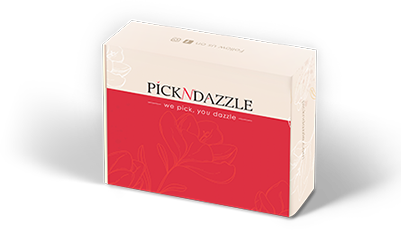Do Exfoliate
Starting in your 30s, cell turnover and the metabolism of your cells will begin to slow down. To keep the skin acting young, getting serious about exfoliating your skin is important. Facial scrubs are great for polishing away dry cells on the surface, but for those in their 30s, it’s best to also exfoliate deeper within the skin by using an exfoliating acid serum.
Use an exfoliating acid (like glycolic, lactic, or salicylic) every other night to help dissolve pigmented cells, refine large pores, and keep the skin looking smooth, clear, and even-toned. Twice a year, a light chemical peel performed by an aesthetician is recommended to enhance the results of at-home exfoliation and encourage the production of collagen in the skin. Be careful not to over do it, though, as you can damage your skin’s moisture barrier, causing dryness and irritation. Consult with a professional to determine the right amount of exfoliation for your skin type.
Don't Use Harsh Acne Products
Although breakouts can still be common for women in their 30s, for most, they are probably happening less often. Nonetheless, it is important to reduce the use of harsh acne products which can dry out the skin. This is not beneficial for preventative aging, which in your 30s should be a bigger focus than it was in your 20s. The best way to address breakouts in your 30s is to spot treat blemishes. That way, you are only treating areas as needed instead of using harsh acne products all over the face where breakouts are not occurring.
As for preventative aging, be sure your cleanser is gentle and sulfate-free so that when you are cleansing, your skin is not being stripped of much-needed water. If you find your skin is changing in your 30s due to hormonal fluctuations, it is a good idea to consult a professional to discuss how to balance the needs of your skin.
Do Mind Your Vitamins
Vitamins, such as A, C, and E, can be applied topically to the skin in the form of serums, toners, and moisturizers. These vitamins help prevent the breakdown of collagen by reducing free radicals created by smoking, drinking, exercise, UV sunlight, and pollution. Vitamins C and E, in particular, keep skin tone even and help lighten discoloration from breakouts, pregnancy, birth control pills, and hormones. In your 30s, consuming antioxidant-rich foods, such as berries, spinach, citrus fruits, and avocados, are a great way to give your cells protection and address aging internally.
Don't Go Without Sunscreen
Unprotected skin exposed to daylight is the number one cause of visible, premature skin aging, which in the early 30s will begin to show.
Many people skip using sunscreen because a few they have tried caused breakouts; however, I encourage you to keep looking for a formula that works for your skin. Since oil production and breakouts can still occur in the 30s, look for a lightweight sunscreen containing zinc oxide. If you haven’t been diligent about wearing SPF daily, now is the time to start taking this seriously. Generously applying a moisturizer with sunscreen to the face and neck will dramatically slow down the aging process.
Do Invest In A Good Eye Cream And Use It Daily
For most people, the eye area is the first to show signs of aging — usually between the age of 28 to 32 —so an eye cream is a great investment at this stage of your life. A couple of things to know about eye cream usage: Apply eye cream with the ring finger, the weakest finger, morning and evening to the orbital bone around the eyes. Use gentle patting motions and make sure to avoid rubbing and tugging. It is also important not to apply eye cream too close to the lashline as the product can travel into your eyes and be picked up by your eyelashes, causing irritation or unnecessary puffiness. Look for an eye cream containing wrinkle-repairing ingredients to improve and correct the appearance of dryness, fatigue, and expression lines. A formula with line-filling peptides will increase healthy cell communication and return cellular activity to its youthful state.
Don't Skip Visits With A Skin Professional
Facials are an important part of any skin-care regimen because they keep clogged pores and blackheads at bay, and they also soften lines. I recommend that my clients get professional treatments at least four times a year. A skin-care professional will notice if there are any changes to skin (due to circumstances like weather, hormones, or stress) that should be addressed. Your aesthetician will also determine if you are using the right products for your skin type and if they are working effectively, particularly now that aging is a concern. Treatments that focus on exfoliation and hydration are particularly beneficial in the 30s.
Getting chemical peels every few months will also help keep skin smooth and prevent breakouts. An experienced aesthetician will also encourage skin-cancer awareness by pointing out any skin growths or suspicious-looking moles.
Devoting a little extra time to skin care and following these tips will help you keep your skin youthful and healthy in your 30s and beyond. Not in your 30s? Next week I'll have skin-care tips for women in their 40s, and if you're in your 20s, check out my tips from last week.
Source: www.refinery29.com




